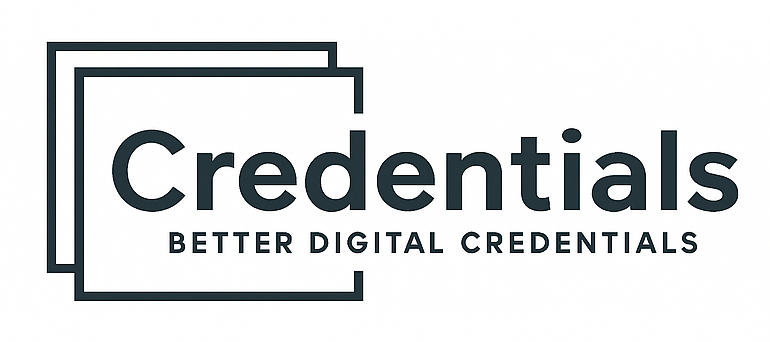Credly vs Accredible: 2025 Comparison
A comprehensive breakdown of features, integrations, and compliance for the two leading digital credentialing solutions
As the adoption of digital credentials continues to accelerate in education, workforce development, and professional training, two platforms stand out as industry leaders: Credly and Accredible. While both serve the same broad purpose—issuing, managing, and verifying digital certificates and badges—they offer distinct features, design philosophies, and user experiences. This article offers a 2025 comparison of the two, exploring their capabilities in depth to help institutions, educators, and HR leaders make informed decisions.
Platform Design and Customization
Credly, now part of Pearson, is one of the most widely adopted digital credentialing platforms globally. It complies with Open Badges 2.0 and 3.0 standards, offering a metadata-rich experience that supports skills tagging and discovery. However, Credly operates as a multi-tenant platform, meaning full white-label customization is limited. Organizations can brand their badges to a degree, but cannot fully tailor the user experience, domain, or interface to match their identity. The badge creation process, however, is streamlined by Credly’s “attribute intelligence,” which suggests metadata based on skills and competencies.
In contrast, Accredible has doubled down on customization. It features a powerful drag-and-drop badge and certificate editor with a variety of professionally designed templates. Organizations can white-label nearly every aspect of the experience—from issuing domains and recipient URLs to email templates and branded credential pages. Accredible also supports Open Badges and goes further by offering optional blockchain verification, enabling recipients and third parties to verify credentials permanently and independently.
Issuance Workflow and End-User Experience
When it comes to the process of issuing and receiving credentials, Credly and Accredible offer very different philosophies. Credly allows issuers to distribute credentials individually or in bulk via CSV uploads or APIs. Its platform includes analytics, skills directories, and pathways that guide learners or employees through progressive credentialing. However, one important distinction is that recipients must create an account with Credly to access and share their credentials—something that adds friction for users unfamiliar with the platform.
Accredible’s approach is more recipient-friendly. Learners or professionals who receive credentials are not required to create an account, allowing them to view, download, and share with a single click. Issuers can distribute credentials in bulk and even create stackable badges, which build visual “pathways” of learning or achievement over time. Accredible also features a public learner directory that organizations can use to showcase certified individuals.
Integrations and Verification Capabilities
Both platforms offer broad integration capabilities, essential for large institutions or organizations using Learning Management Systems (LMS), Customer Relationship Management (CRM) tools, or HR software. Credly supports over 29 third-party integrations, including Canvas, Salesforce, and Moodle, as well as robust APIs, Single Sign-On (SSO), and Zapier automation. Its focus extends beyond issuing credentials to building a network of talent visibility, with features like skill profiles, directories, and labor market alignment.
Accredible also integrates with major LMS platforms and offers Zapier automation to connect with tools like Zoom, Slack, and hundreds of others. Its standout features include mobile wallet support—credentials can be stored in Apple or Google Wallets—and deep personalization of verification pages. Accredible emphasizes recipient empowerment, making credentials easy to share on LinkedIn or embed on personal websites, and supports blockchain-backed verification to ensure permanence and trust.
Security and Compliance
On the compliance front, Credly places a strong emphasis on data protection and enterprise-level security. The platform is hosted on Amazon Web Services (AWS) and maintains certifications including ISO 27001 for information security and ISO 27701 for privacy. It also offers a Voluntary Product Accessibility Template (VPAT) to ensure accessibility for users with disabilities.
While Accredible doesn’t list the same formal ISO certifications, it offers security features such as fraud detection, secure PDF credentials, and blockchain verification. For many issuers, the ability to provide recipients with immutable credentials without relying on a central server is a major value proposition—especially in higher education or industries that require long-term verification.
Pricing and Target Audience
Credly typically serves large enterprises, professional associations, and universities with broad credentialing needs. It does not publicly list pricing, instead offering customized quotes based on usage and scale. As a result, it is often perceived as a premium solution, best suited for organizations with complex needs and sufficient budgets.
Accredible, on the other hand, provides transparent pricing tiers. For example, its “Launch” plan starts at $996 per year for up to 250 recipients, making it more accessible to small and medium-sized institutions, training companies, and independent educators. While it can also scale to serve larger customers, its pricing structure and intuitive design make it especially attractive to those new to digital credentialing.
Final Thoughts
Choosing between Credly and Accredible depends largely on your organization’s size, technical infrastructure, and credentialing goals. Credly shines in environments where enterprise-grade security, talent ecosystem visibility, and large-scale credentialing are priorities. Accredible, meanwhile, offers greater customization, ease of use, and flexibility for both issuers and recipients—making it ideal for those seeking a seamless user experience and more control over branding.
Both platforms are excellent at what they do and are constantly evolving. For 2025, the competition between Credly and Accredible reflects a broader trend: digital credentials are no longer just about issuing badges—they are about building trust, reputation, and opportunity in the digital age.


